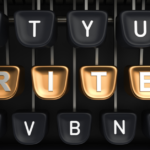The Digital Renaissance of Writing
As a writer, I’ve seen firsthand the incredible evolution of creative writing software. The transition from simple word processors to sophisticated AI-powered writing assistants has been nothing short of pioneering.
This digital renaissance has transformed how we approach storytelling, offering tools that our literary predecessors could only dream of.
AI-Powered Writing Tools: A New Frontier
Today’s AI writing tools are remarkably advanced. They can generate content, suggest plot twists, and even mimic specific writing styles.
For many writers, these tools serve as a digital muse, helping to overcome writer’s block and spark new ideas.
However, the rise of AI in writing raises important questions about authorship and originality. While these tools can be incredibly helpful, it’s crucial to maintain your unique voice and style.
I’ve found that using AI as a brainstorming tool or for initial drafts can be beneficial, but the final product should always bear the unmistakable mark of human creativity.
Planning and Organization: Digital Tools for Complex Narratives
One area where creative writing software sets itself apart is in the planning and organization phase. Modern outlining tools can handle everything from basic story structures to intricate, multi-arc narratives.
For fantasy and science fiction writers, world-building software has been a game-changer.
These tools allow authors to create and manage complex fictional universes with ease. You can design intricate maps, develop family trees, and even craft fictional languages all within a single platform.
This level of organization was once a logistical nightmare involving countless notebooks, sticky notes, and color-coded systems.
Now, it’s all at your fingertips in a digital format.
Collaborative Writing: Breaking Down Barriers
Cloud-based writing platforms have revolutionized collaboration in writing. Real-time editing, version control, and seamless sharing have made it possible for writers, editors, and beta readers to work together regardless of geographical boundaries.
These platforms have also given rise to new forms of storytelling. Collaborative writing projects, where many authors contribute to a single narrative, are becoming increasingly popular.
This new approach challenges traditional notions of authorship and opens up exciting possibilities for creative expression.
The Double-Edged Sword of Productivity Features
Many writing software packages come equipped with productivity tools designed to keep writers focused and on track. These features include word count goals, writing sprint timers, and distraction-free modes.
While these can be helpful, they can also create unnecessary pressure.
I’ve experienced firsthand the stress of becoming overly fixated on hitting daily word counts or sprint goals. It’s important to remember that creativity doesn’t always conform to rigid schedules or metrics.
Using these tools judiciously, balancing productivity with creative freedom, is key to maintaining a healthy writing practice.
Analytics in Writing: Data-Driven Creativity?
The integration of analytics into creative writing software represents a fascinating development in the field.
Some programs now offer the ability to analyze writing style, forecast reader engagement, and suggest changes to improve marketability.
This data can be incredibly valuable, especially for genre writers or those aiming for commercial success. However, it also raises concerns about the potential homogenization of literature.
There’s a delicate balance between using data to inform your writing and allowing it to dictate your creative choices.
Accessibility and Democratization of Writing
Creative writing software has made the craft more accessible than ever before. Text-to-speech features assist writers with visual impairments, while translation tools help multilingual authors reach broader audiences.
The availability of free and low-cost options means that anyone with a story to tell can find the tools to do so.
This democratization of writing is exciting, but it also means the market is more saturated than ever. Standing out requires not just mastery of these tools, but the ability to use them in unique and creative ways.
The Future of Creative Writing Software
Looking ahead, the possibilities for creative writing software are both thrilling and slightly daunting. We may soon see virtual reality writing environments that allow authors to step into their fictional worlds.
AI could potentially generate entire novels based on a few prompts.
Blockchain technology might alter how we protect and monetize intellectual property rights.
Despite these technological advancements, the core of writing stays unchanged. It’s still about connecting with readers, sharing stories, and exploring the human experience.
The tools may evolve, but the heart of the craft stays steadfast.
Navigating the Digital Writing Landscape
Experimenting with Tools
The vast array of writing software available can be overwhelming. It’s important to experiment with different tools to find what works best for your writing process.
Some writers thrive with minimalist, distraction-free editors, while others prefer feature-rich platforms with extensive organizational capabilities.
When trying out new software, give yourself time to adjust. What feels awkward at first might become an indispensable part of your writing routine with practice.
Conversely, don’t feel pressured to stick with a tool just because it’s popular or highly rated. Your writing process is unique, and your choice of software should reflect that.
AI as a Creative Partner
AI writing assistants can be powerful allies in the creative process, but it’s crucial to use them wisely. These tools excel at generating ideas, suggesting synonyms, or even helping with basic plot structures.
However, they should never replace your unique voice or creative vision.
Consider using AI for brainstorming sessions or to overcome writer’s block. You might be surprised at how an AI-generated prompt can spark a completely original idea in your mind.
Just remember that the final product should always be distinctly yours.
Balancing Technology and Tradition
While digital tools offer incredible capabilities, there’s still value in traditional writing methods. Many writers find that stepping away from the screen and putting pen to paper can reignite their creativity.
The tactile experience of writing by hand can engage different parts of your brain, potentially leading to new insights or ideas.
Consider incorporating a mix of digital and traditional tools in your writing process. You might brainstorm with pen and paper, outline using software, draft on a typewriter, and edit on a computer.
Finding the right balance can enhance both your productivity and creativity.
The Role of Analytics in Creative Writing
Writing analytics can provide valuable insights into your work, but they shouldn’t dictate your creative decisions. Use these tools to identify patterns in your writing, such as overused words or sentence structure tendencies.
However, be cautious about letting analytics influence your storytelling too heavily.
Remember that some of the most beloved works of literature might not have fared well under algorithmic analysis. Trust your instincts and use analytics as a tool for improvement, not as a strict guide for your writing.
Embracing Collaboration While Protecting Your Vision
Online writing communities and collaborative platforms offer incredible opportunities for feedback and growth. Engaging with other writers can provide fresh perspectives, constructive criticism, and motivation.
However, it’s essential to maintain your unique vision for your work.
When collaborating or seeking feedback, be clear about what kind of input you’re looking for. Are you open to major plot changes, or are you primarily concerned with sentence-level edits?
Setting clear boundaries can help you make the most of collaboration without compromising your artistic integrity.
Continuous Learning and Adaptation
The landscape of creative writing software is constantly evolving. New tools and features emerge regularly, offering novel ways to approach the writing process.
Staying curious and open to new technologies can help you find out about tools that significantly enhance your writing.
However, don’t feel pressured to adopt every new trend or tool. Evaluate new software based on how it fits into your existing process and whether it genuinely improves your writing or productivity.
Focusing on Fundamentals
Amidst the excitement of new technologies, it’s crucial not to lose sight of the fundamentals of good storytelling. No software can replace a well-developed plot, compelling characters, or evocative prose.
Use technology to enhance your writing, but never at the expense of these core elements.
Regularly revisiting the basics of storytelling can help you use technology more effectively. Understanding story structure, character development, and pacing will allow you to leverage software tools in ways that truly enhance your work.
Specific Software Recommendations
For Outlining and Planning
- Scrivener: A comprehensive writing studio that excels in organization and research management.
- Plottr: Specializes in visual plotting and timeline creation.
- Workflowy: An infinitely nestable list-making tool, perfect for complex outlines.
For Distraction-Free Writing
- FocusWriter: A simple, customizable environment for pure writing.
- WriteRoom: Offers a full-screen writing experience with minimal distractions.
- Ommwriter: Creates a zen-like writing atmosphere with customizable backgrounds and sounds.
For Collaborative Writing
- Google Docs: The go-to for real-time collaboration and easy sharing.
- Novlr: A cloud-based writing tool with collaboration features.
- Wattpad: A platform for sharing stories and getting feedback from a community of readers.
For AI-Assisted Writing
- ProWritingAid: Offers in-depth analysis and suggestions for improving your writing.
- Sudowrite: Uses AI to help generate ideas and overcome writer’s block.
- Grammarly: Provides grammar and style suggestions in real-time.
For World-Building
- World Anvil: A comprehensive world-building tool for creating and organizing complex fictional universes.
- Campfire: Offers character development, world-building, and plotting tools in one package.
- Wonderdraft: Specializes in creating beautiful, customizable maps for fictional worlds.
Ethical Considerations in Using Writing Software
As we embrace these powerful tools, it’s important to consider the ethical implications of their use. The line between assistance and automation can sometimes blur, raising questions about authenticity and the nature of creativity.
Transparency with Readers
When using AI-generated content or heavily relying on software for plot development, consider being transparent with your readers.
This doesn’t mean you need to detail every tool you use, but acknowledging significant AI contributions can help maintain trust with your audience.
Protecting Personal Data
Many writing software platforms need you to upload your work to the cloud. While this offers convenience and backup security, it’s crucial to understand the privacy policies of these platforms.
Ensure that your intellectual property rights are protected and that your work isn’t being used to train AI models without your consent.
Supporting Human Creativity
As AI becomes more sophisticated, there’s a risk of over-reliance on automated tools. Remember that the most compelling stories come from human experiences, emotions, and imagination.
Use software to enhance your creativity, not replace it.
The Environmental Impact of Digital Writing
While digital tools have reduced the need for paper, they’re not without environmental costs. The energy consumption of data centers and the electronic waste from devices are significant concerns.
Consider the following:
- Choose cloud services that use renewable energy.
- Opt for devices with longer lifespans and good repairability.
- Properly recycle old devices and batteries.
By being mindful of these aspects, we can minimize the environmental impact of our digital writing practices.
Accessibility Features in Writing Software
Modern writing software often includes features that make writing more accessible to people with disabilities. These can include:
- Text-to-speech and speech-to-text capabilities
- High contrast modes and customizable fonts for visual impairments
- Keyboard shortcuts for people who have limited mobility
When choosing writing software, consider these features not just for your own needs, but to confirm your work can be created in an inclusive environment.
The Psychology of Digital Writing
The shift to digital writing tools has psychological implications that are worth considering. The immediate feedback from grammar checkers, the ability to easily delete and rewrite, and the constant connection to online resources can all impact how we approach writing.
Some writers find that the ease of editing in digital formats leads to more experimental first drafts, knowing they can easily revise later.
Others might feel paralyzed by the perfectionism that instant grammar and style checks can encourage.
Understanding how these tools affect your personal writing psychology can help you use them more effectively.
You might find that turning off certain features during first drafts helps you write more freely, or that setting specific times for editing prevents endless tinkering.
Integrating Writing Software with Other Creative Tools
Writing doesn’t exist in a vacuum, and modern software often allows for integration with other creative tools. For example:
- Linking your writing software with image editing tools for cover design or illustrations
- Connecting with music production software to create soundtracks for your stories
- Integrating with project management tools to track deadlines and collaborate with editors or publishers
These integrations can create a more holistic creative environment, allowing you to manage all aspects of your writing project from a central hub.
The Role of Community in Digital Writing
Many writing software platforms now include community features, allowing writers to connect, share work, and offer feedback. These digital writing communities can be invaluable for:
- Getting constructive criticism on your work
- Finding beta readers or critique partners
- Staying motivated through shared goals and challenges
- Learning about new tools and techniques from other writers
Engaging with these communities can enhance your writing experience and help you grow as an author. However, it’s important to approach online interactions with caution and maintain healthy boundaries.
Adapting Traditional Writing Exercises to Digital Formats
Many classic writing exercises and techniques can be adapted and enhanced using digital tools. For example:
- Using random word generators for prompt exercises
- Creating digital vision boards for character or setting inspiration
- Using mind mapping software for non-linear brainstorming sessions
By reimagining traditional writing practices through a digital lens, we can combine the best of both worlds, leveraging technology to enhance time-tested creative methods.
The Future of Publishing and Writing Software
As writing software evolves, it’s likely to have a significant impact on the publishing industry. We’re already seeing changes such as:
- Direct publishing platforms integrated into writing software
- AI-assisted marketing tools for self-published authors
- Enhanced metadata tagging for improved discoverability
These developments are changing how books are created, published, and discovered. Staying informed about these trends can help writers navigate the evolving landscape of publishing.
Writing software offers incredible tools for organization, collaboration, and refinement, but the spark of a story, the depth of a character, and the power of well-crafted prose still come from the writer’s mind and heart.
The key is to view these tools as extensions of your creativity, not replacements for it. Use them to amplify your strengths, shore up your weaknesses, and free up mental space for the truly creative aspects of writing.
Remember that the most powerful tool in your arsenal will always be your unique perspective and voice.
Embracing the Digital Writing Era
As we navigate this new era of digital writing, it’s clear that the landscape of creative writing has been forever changed.
The tools at our disposal offer unprecedented capabilities, but they also come with new challenges and considerations.
By approaching these tools with a balance of enthusiasm and discernment, we can harness their power to enhance our writing without losing the essential human element that makes storytelling so powerful.
The future of writing is digital, but the heart of writing stays deeply human.
Frequently Asked Questions
What is the best software for novel writing?
The best software for novel writing depends on person needs and preferences. Popular options include Scrivener for it’s organizational features, Ulysses for it’s clean interface, and Google Docs for it’s collaboration capabilities.
Can AI write a book?
While AI can generate text and assist in writing, it now cannot write a finish, coherent book without human intervention. AI tools are best used for assistance and inspiration as opposed to full authorship.
How do I choose the right writing software?
Consider your specific needs, such as organization, collaboration, or distraction-free writing. Try free trials of different software to see what fits your writing style and workflow best.
Is writing software necessary for authors?
Writing software isn’t strictly necessary, but it can significantly enhance productivity and organization. Many successful authors use specialized software to streamline their writing process.
What are the benefits of cloud-based writing software?
Cloud-based writing software offers benefits like automatic backups, access from many devices, and easy collaboration with editors or co-authors.
How can I protect my work when using online writing tools?
Use reputable software with strong privacy policies, enable two-factor authentication when available, and regularly back up your work to a personal device or separate cloud storage.
Are there free choices to paid writing software?
Yes, there are many free options available, such as Google Docs, LibreOffice Writer, and FocusWriter. These offer basic functionality suitable for many writers.
Can writing software help with writer’s block?
Some writing software includes features like writing prompts, goal setting, and progress tracking, which can help overcome writer’s block by providing structure and motivation.
How do I transfer my work between different writing software?
Most writing software supports common file formats like .docx or .txt. Some also offer direct import/export features for popular platforms.
Always check compatibility before switching software.
Is it worth paying for premium writing software?
Premium software often offers advanced features that can significantly improve your writing process. Whether it’s worth the cost depends on your specific needs and how much you’ll use the additional features.
Key Takeaways
- Creative writing software has revolutionized the writing process, offering tools for organization, collaboration, and creativity enhancement.
- AI-powered writing tools can be valuable aids but should complement, not replace, human creativity.
- The choice of writing software should be based on person needs and preferences, with consideration for factors like organization, collaboration, and distraction management.
- While digital tools offer many benefits, balancing technology with traditional writing methods can enhance creativity.
- The core of good storytelling stays unchanged despite technological advancements.




